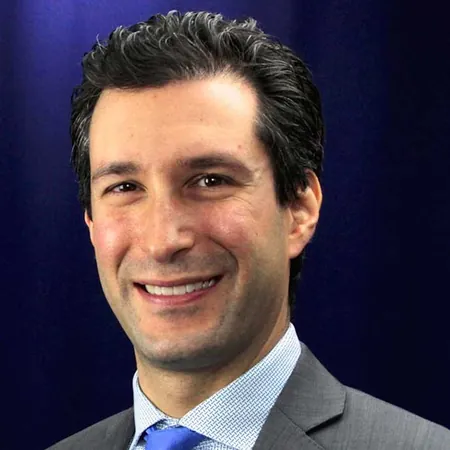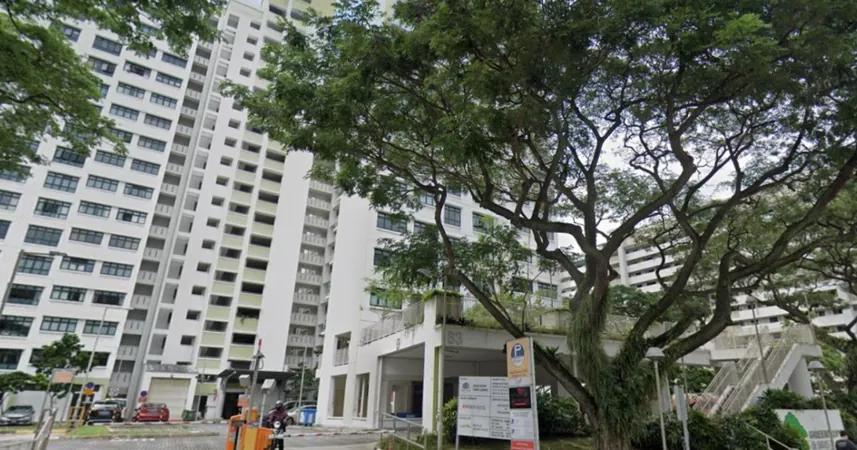
Faricimab: A Game Changer in Treating Retinal Vein Occlusion?
2025-04-02
Author: Rajesh
A groundbreaking study has confirmed the safety and effectiveness of faricimab as a treatment for macular edema resulting from retinal vein occlusion (RVO). This innovative therapy works by reducing vascular endothelial growth factor (VEGF) and has shown promising results in comparison to traditional treatments.
The research stemmed from advanced phases of the BALATON and COMINO trials, which highlighted faricimab's noninferiority to aflibercept after 24 weeks of treatment. Remarkably, improvements in vision and retinal structure were sustained for over a year—a significant contrast to previous studies such as the COPERNICUS trial, which had noted a decline in both anatomical and visual results after 24 weeks of anti-VEGF therapy.
Dr. Carl J. Danzig from the Rand Eye Institute noted, “This report from BALATON/COMINO is a pioneering assessment of sustained vision and anatomical improvements maintained for over 1 year in a global phase 3 study involving patients with branch and central RVO.” He emphasized that faricimab had a tolerable safety profile, consistent with previously approved indications for the drug.
The study involved 1,282 participants aged 18 and older, all suffering from treatment-naïve foveal center-involved macular edema due to branch (BALATON) or central/hemiretinal (COMINO) RVO. Each participant's visual acuity and retinal thickness were meticulously evaluated, ensuring comprehensive data collection.
Throughout the study, patients received intravitreal injections of either faricimab or aflibercept every four weeks for 20 weeks, followed by an adjustment phase that allowed for more personalized treatment regimens based on their individual responses.
By the conclusion of the trial, the findings were striking. Participants demonstrated significant visual acuity improvements, with gains that persisted even after transitioning to the less frequent dosing strategy. For instance, participants treated with faricimab in the BALATON trial showcased an average increase of 18.1 letters on the Early Treatment Diabetic Retinopathy Study (ETDRS) scale up to week 72, with similar results mirrored in the COMINO trial.
Furthermore, concerning changes in central subfield thickness (CST), the adjustments showed a consistent reduction, highlighting the effectiveness of faricimab in promoting healthier retinal environments.
An impressive 64.1% of BALATON participants and 45.5% of COMINO participants were able to successfully extend their treatments to every 12 weeks or longer, indicating not only the drug's efficacy but also a potential decrease in the treatment burden for patients.
The implications of this study could revolutionize the approach to treating RVO, offering patients a long-lasting solution that minimizes frequent treatment sessions.
Danzig and his team concluded that these findings bolster the argument for faricimab’s continued use as a robust treatment option against VEGF and retinal vein occlusion. With claims of enduring effectiveness and safety over a 72-week span, faricimab may indeed be a game changer for patients dealing with the debilitating consequences of RVO.
Stay tuned for more updates on this exciting development in ocular medicine!





 Brasil (PT)
Brasil (PT)
 Canada (EN)
Canada (EN)
 Chile (ES)
Chile (ES)
 Česko (CS)
Česko (CS)
 대한민국 (KO)
대한민국 (KO)
 España (ES)
España (ES)
 France (FR)
France (FR)
 Hong Kong (EN)
Hong Kong (EN)
 Italia (IT)
Italia (IT)
 日本 (JA)
日本 (JA)
 Magyarország (HU)
Magyarország (HU)
 Norge (NO)
Norge (NO)
 Polska (PL)
Polska (PL)
 Schweiz (DE)
Schweiz (DE)
 Singapore (EN)
Singapore (EN)
 Sverige (SV)
Sverige (SV)
 Suomi (FI)
Suomi (FI)
 Türkiye (TR)
Türkiye (TR)
 الإمارات العربية المتحدة (AR)
الإمارات العربية المتحدة (AR)